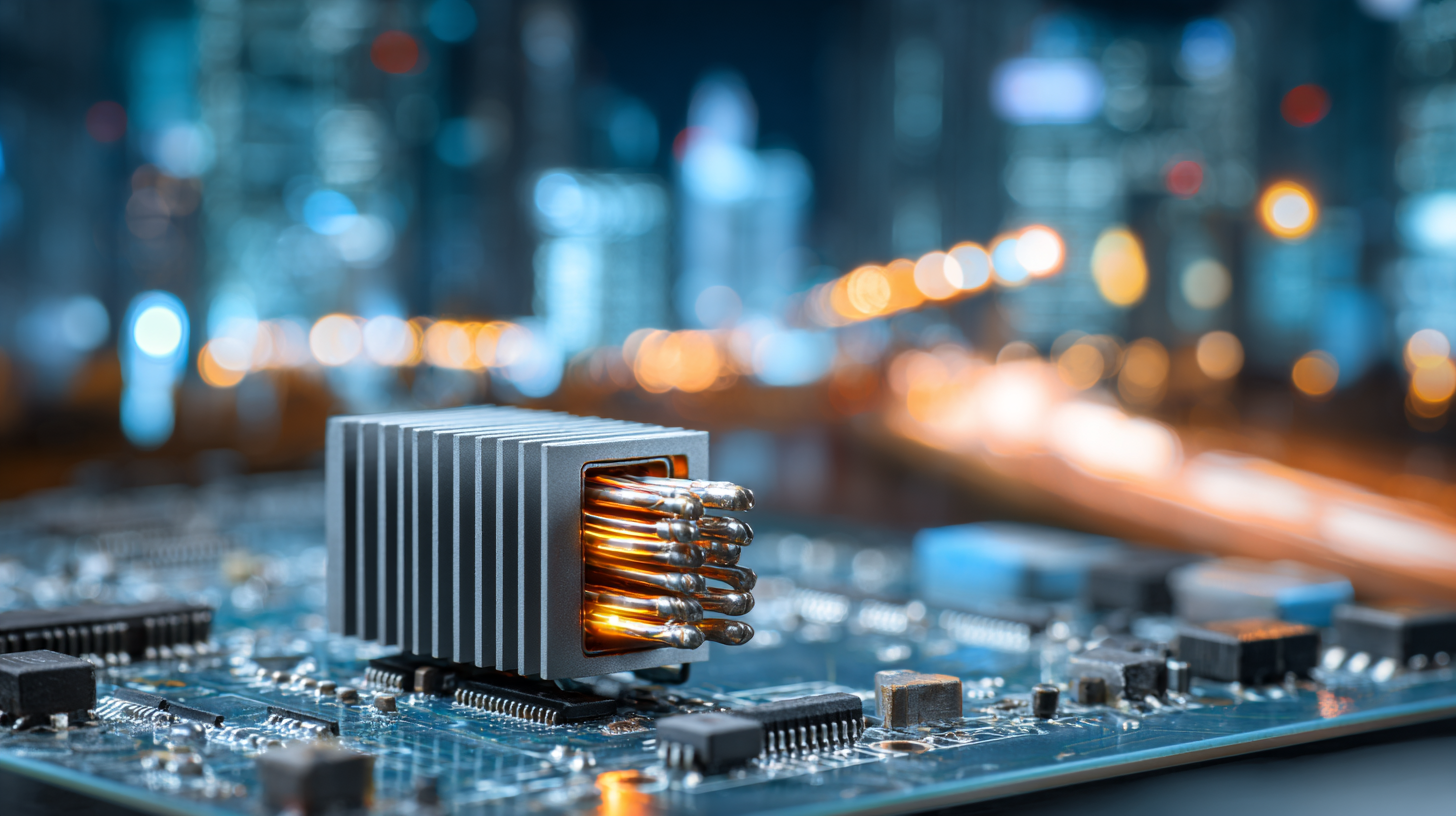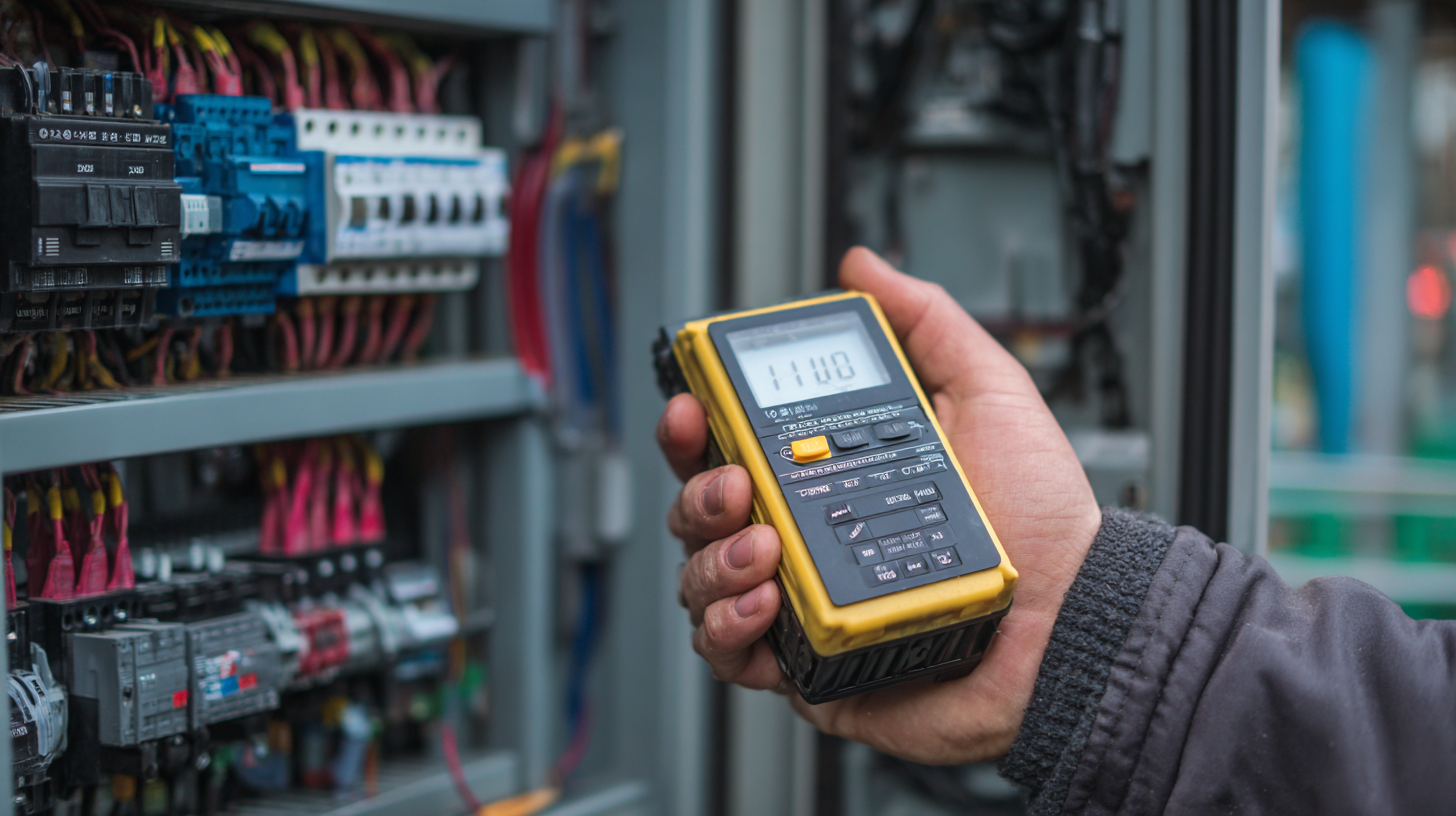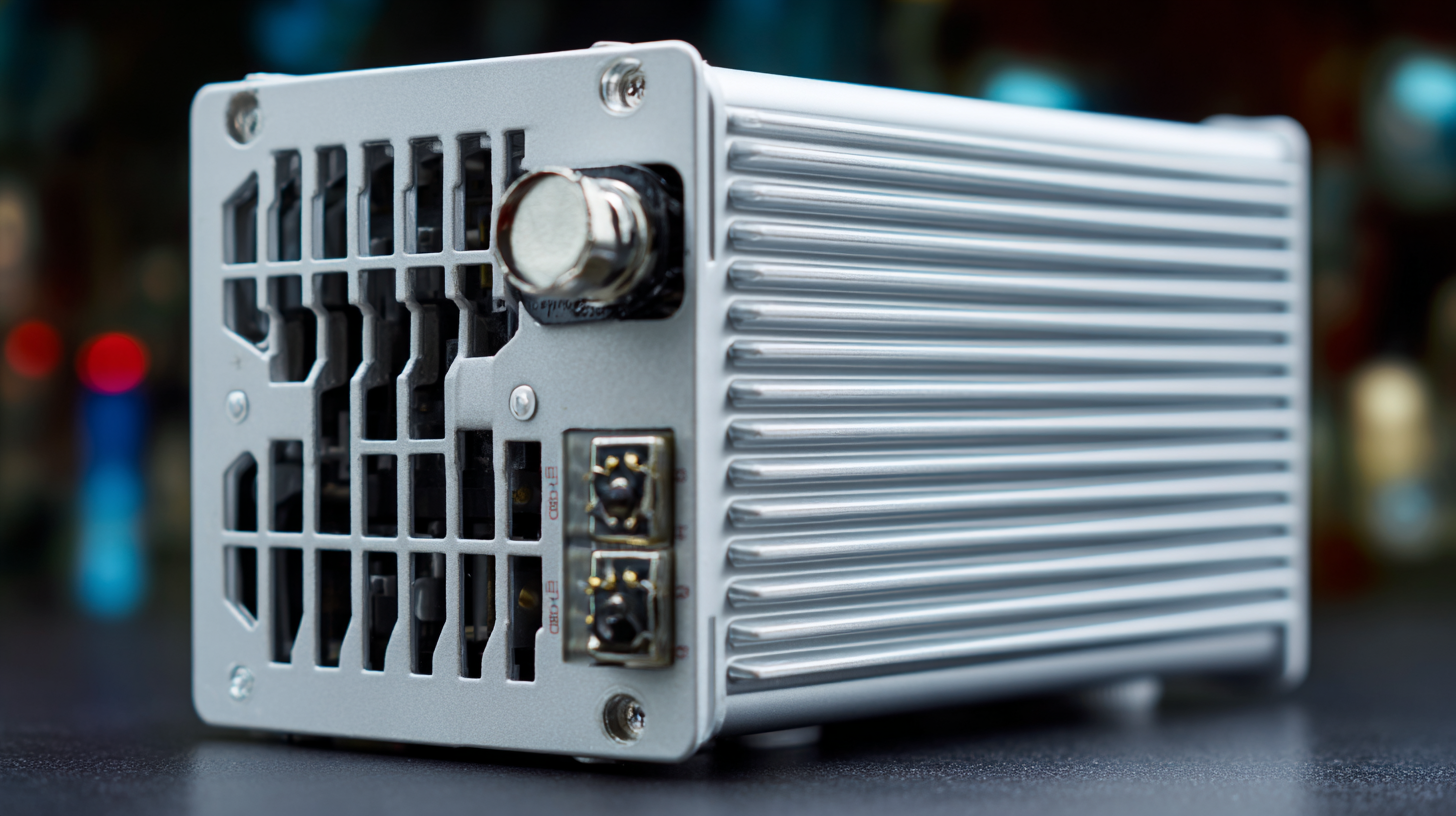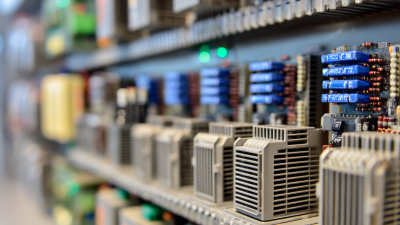Understanding the Importance of DC to AC Converters in Modern Power Systems
In the contemporary landscape of power systems, the significance of DC to AC converters has rapidly escalated, driven by the increasing integration of renewable energy sources and energy efficiency technologies. According to a recent report by Allied Market Research, the global DC to AC converter market is projected to reach $19.5 billion by 2027, growing at a compound annual growth rate (CAGR) of 6.4%. This surge highlights the critical role that these converters play in enabling effective energy conversion and distribution. As more industries and households embrace alternatives like solar and wind energy, the demand for high-performance DC to AC converters is pivotal for optimizing power supply and enhancing grid stability. Their ability to transform direct current from renewable sources into alternating current for general use not only maximizes energy usage but also supports the transition towards sustainable power systems.

The Role of DC to AC Converters in Renewable Energy Integration
DC to AC converters, commonly known as inverters, play a crucial role in the integration of renewable energy sources into modern power systems. With an increasing shift towards sustainability, global renewable energy capacity reached approximately 3,063 gigawatts (GW) in 2020, driven primarily by solar and wind energy installations. According to the International Renewable Energy Agency (IRENA), solar photovoltaics (PV) accounted for nearly 70% of this growth, underscoring the necessity for efficient DC to AC conversion to deliver usable power to the grid.
The significance of inverters in renewable energy integration extends beyond mere conversion. They are also integral in ensuring grid stability and managing the variable nature of renewable resources. Research by BloombergNEF indicates that the global market for inverters is expected to grow at a compound annual growth rate (CAGR) of 15% from 2021 to 2026. This growth highlights the advancing technology aimed at improving inverter efficiency and reliability, enabling better interaction between renewable energy systems and existing infrastructure. Enhanced inverter technology not only facilitates increased renewable penetration but also supports services such as grid frequency control and reactive power support, marking the versatility of DC to AC converters in contemporary energy management.
Key Components and Technologies Used in DC to AC Converters
DC to AC converters, also known as inverters, play a pivotal role in modern power systems by facilitating the conversion of direct current (DC) into alternating current (AC). This conversion is essential for integrating renewable energy sources, such as solar and wind power, into the grid, enabling efficient electricity distribution to homes and industries. The key components that make up these converters include power semiconductors, control systems, and filtering devices, all designed to optimize performance and efficiency.
A significant advancement in the technology behind DC to AC converters is the use of insulated gate bipolar transistors (IGBTs), which have transformed how power conversion occurs. As per recent market reports, the IGBT smart power module market was valued at approximately $10.02 billion in 2022 and is projected to grow at a compound annual growth rate (CAGR) of 8.8% from 2024 to 2030.
This growth underscores the increasing reliance on IGBT technology in power systems due to its efficiency, thermal conductivity, and operational reliability, making it a preferred choice for various applications, including renewable energy systems and electric vehicles. As the demand for clean energy sources rises, the advancements in IGBT technology are set to enhance the functionality and efficiency of DC to AC converters, further supporting the transition towards sustainable energy solutions.
Understanding Efficiency and Performance Metrics of Converters
 DC to AC converters, often referred to as inverters, play a crucial role in modern power systems by facilitating the conversion of direct current (DC) to alternating current (AC). One of the primary considerations when evaluating these devices is their efficiency. Efficiency measures how much of the input power is converted into usable output power, with higher efficiency indicating fewer energy losses.
Standard efficiency metrics range from 90% to over 98% in high-quality inverters, meaning that minimal energy is wasted during the conversion process. This efficiency is paramount in applications such as renewable energy systems, where maximizing power output is essential for economic viability and sustainability.
DC to AC converters, often referred to as inverters, play a crucial role in modern power systems by facilitating the conversion of direct current (DC) to alternating current (AC). One of the primary considerations when evaluating these devices is their efficiency. Efficiency measures how much of the input power is converted into usable output power, with higher efficiency indicating fewer energy losses.
Standard efficiency metrics range from 90% to over 98% in high-quality inverters, meaning that minimal energy is wasted during the conversion process. This efficiency is paramount in applications such as renewable energy systems, where maximizing power output is essential for economic viability and sustainability.
Performance metrics also encompass factors beyond efficiency, such as total harmonic distortion (THD), output voltage regulation, and response time. THD measures the distortion in the output waveform compared to a pure sine wave, which is critical for ensuring compatibility with sensitive electronic equipment. Furthermore, effective output voltage regulation indicates the inverter’s ability to maintain stable voltage levels despite fluctuations in load or input conditions. Fast response times are essential for applications that demand instantaneous performance under varying loads, such as in grid-tied solar systems. Collectively, these performance metrics provide a comprehensive understanding of an inverter's operational capabilities, ultimately influencing the design and selection of converters in modern power systems.
Challenges and Solutions in Implementing DC to AC Conversion
The transition from direct current (DC) to alternating current (AC) is crucial in modern power systems, particularly with the growing integration of renewable energy sources. However, implementing DC to AC converters presents several challenges. One of the most pressing issues is efficiency loss during conversion. Reports indicate that traditional converters can only achieve efficiencies of about 90-95%, resulting in significant energy waste. Additionally, the fluctuation of input voltages from renewable sources complicates the conversion process, requiring advanced control strategies to maintain output stability.
Another challenge involves the high initial costs associated with advanced converter technologies. For instance, while silicon-based converters have dominated the market, emerging technologies such as silicon carbide (SiC) or gallium nitride (GaN) show promise in enhancing performance. Though these materials offer higher efficiency and better thermal management, their adoption is hindered by higher manufacturing costs. A recent market analysis predicts that despite these challenges, the global DC to AC converter market is expected to grow significantly, from $3.1 billion in 2021 to $4.8 billion by 2026, indicating a substantial investment in overcoming these barriers and improving performance in the face of growing energy demands.

Future Trends in DC to AC Converter Design and Application
The landscape of DC to AC converters is rapidly evolving as new technologies and designs emerge, particularly with the rise of module-level power electronic (MLPE) solutions. These converters, specifically optimized for photovoltaic applications, are becoming critical due to their ability to improve energy efficiency and performance at the component level. The success stories of high-growth companies in this sector underscore the lucrative potential of MLPE, highlighting a shift towards decentralized energy management systems that enhance sustainability in modern power systems.
Looking ahead, the integration of advanced materials such as silicon carbide (SiC) and gallium nitride (GaN) is set to revolutionize converter technologies, enabling higher performance and efficiency. These wide bandgap semiconductor materials are designed to operate at higher voltages and switching frequencies, making them ideal for next-generation power electronic devices. Additionally, the growing demand for electric vehicles and energy-efficient appliances is propelling advancements in power management integrated circuits, signaling a robust future for DC to AC converters as they adapt to emerging energy needs and technological innovations.
Related Posts
-

5 Proven Reasons High Voltage DC DC Converters Are Essential for Modern Power Systems
-

Discover the Advantages of Implementing UPS Power Solutions for Your Business
-

Innovative Solutions for AC to DC Inverter Applications
-

How to Select the Right AC to DC Converter for Your Specific Needs
-

10 Digital Tips for Optimizing Efficiency in DC DC Power Supply Systems
-

Exploring UPS Electrical Innovations at the 138th Canton Fair China 2025
At Premium PSU, we are specialists in designing and manufacturing power conversion systems for the industrial market. Our product range includes high reliability power supplies from 50W to 72kW.
PREMIUM PSU
C/ Dolors Aleu, 19-21, 2nd Floor
08908 – Hospitalet de Llobregat
Barcelona-SPAIN
t.+34 93 223 26 85


